Being a member of a traditionalist family, Julcsi Ádám became familiar with traditional Hungarian folk music and the rhythms of Transylvania even before she was born. Her mother, Katalin Ádám, is a well-known arts, crafts and “folk game” instructor who has initiated many children’s programs in Szeklerland, while her father, Gyula Ádám, photographs folk culture. So Julcsi was raised in this spirit, to take care of and preserve the Hungarian heritage. She started dancing at a very young age under the tutelage of her mother, became a member of a folk dance group very early in life, and attended dozens of dance camps; she also studied music at an art school for 12 years. All of this helped her fulfill her childhood dream of becoming a professional folk dancer in Transylvania. Julcsi Ádám spoke with TransylvaniaNOW about her education, her life as a professional dancer and the situation of folk dance ensembles in Romania.
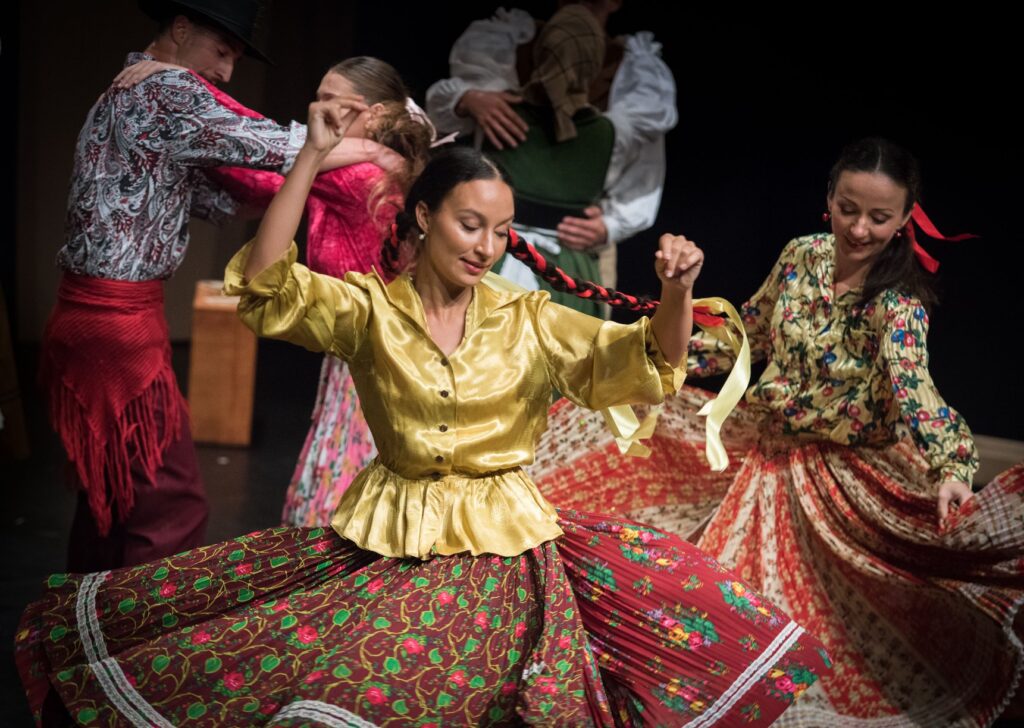
“I was born into a traditionalist family. I used to listen to music and rhythms in my mother’s womb. Because my mother was one of the teachers of the Táncház of the Little Ones [táncház literally translates as dance house, an occasional folk dance event, a form of entertainment in Hungarian territories, where people learn folk songs and dances but can also dance freely to live music – ed. note.]. I was raised as a toddler in the rhythm and basic steps of folk dancing. Later, I attended the folk dance sessions and arts and crafts activities organized at the Children’s House. I became a member of the Borsika Folk Dance Group when I was very little,” Julcsi told TransylvaniaNOW, describing how she got into folk culture.
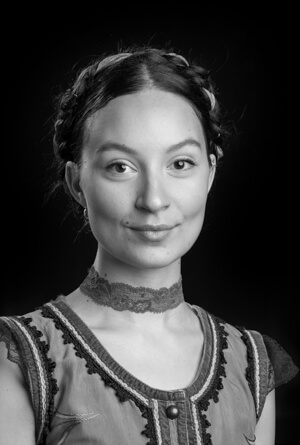
When asked what attracted her to folk art, if someone had drawn her to this culture, Julcsi said that it was purely natural for her. “I learned first about our traditions, the richness and aesthetics of our folk art treasures through my parents. Later, folk dance and traditionalist summer camps also offered a great opportunity: I was able to learn about folk dances and instrumental music, especially with the gardon [a folk instrument in Transylvania and Hungary, very much like a cello but played like a percussive instrument – ed. note.]. In addition to the training at the Borsika Folk Dance Group, at camps of different regions, I learned the dances, the styles, of those regions,” Julcsi Ádám told TransylvaniaNOW.
In addition to local, amateur folk dance groups, as well as dance events organized in villages with a Hungarian population, there are five professional Hungarian dance ensembles in Transylvania: Hargita National Szekler Folk Ensemble from Csíkszereda (Miercurea-Ciuc in Romanian), Maros Art Ensemble from Marosvásárhely (Târgu Mureș); Háromszék Folk-Dance Ensemble from Sepsiszentgyörgy (Sfântu Gheorghe); Udvarhely Folk Dance Workshop from Székelyudvarhely (Odorheiu Secuiesc); and the Nagyvárad Dance Ensemble from Nagyvárad (Oradea). The professional groups often tour in Transylvania, and through them and their performances, many become familiar with the traditions of the Hungarian people from Transylvania.
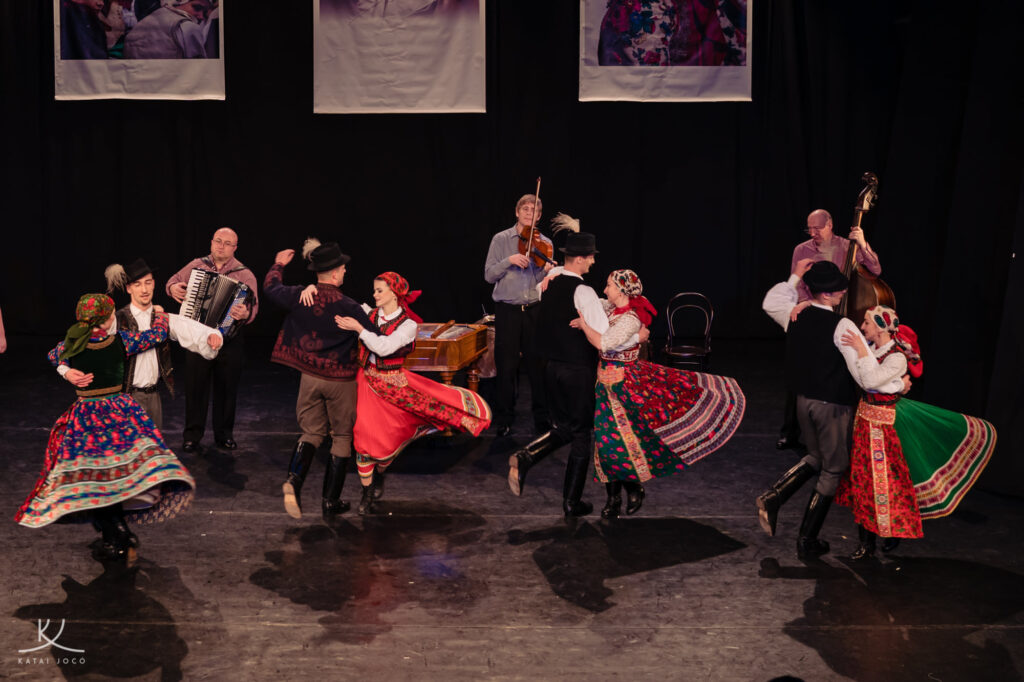
“As a child, I was able to watch many performances of several professional groups. Thinking back, I have to be grateful for my mother again, because through the many performances that we saw, we were able to look at a much wider and more colorful world. I also knew many professional folk dancers. However, I got genuinely interested in the performances of the Háromszék Folk-Dance Ensemble, as traditional folk dancing was tastefully combined with contemporary dance elements.
After graduating, I was preparing to be a dance choreographer. During preparatory choreography classes, I felt that I could not identify with the approach there. So I decided not to attend. Then, just a couple of weeks later, there was an audition at Háromszék, and I applied without thinking. I arrived in a euphoric state to the audition: I was at an exam for the folk dance group that I had always admired as a child. The audition included a rhythm routine, vocal rehearsal, presentation of duets from three regions, flexibility testing, spinning technique and an analysis of one of their popular performances. They hired me with pleasure,” Julcsi Ádám told TransylvaniaNOW as to how she went from being a very talented amateur dancer to a professional one.
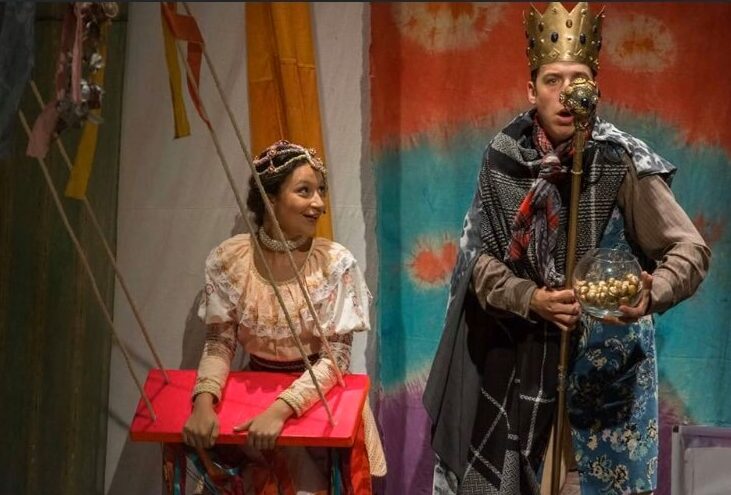
Julcsi also admitted, it was an advantage that aside from singing and dancing, she also played percussion, which she had learned on her own, and the piano, which she learned in the art school she attended for 12 years. “This is how my childhood dream was fulfilled, I became a dancer-musician,” Julcsi added. She played double roles in the performances of “Erdély Mennyegző” (“Transylvanian Wedding”), “Szerencsekrajcár” (“Lucky Coin”), and “Táncsétány” (“Dance Promenade”) – all of which premiered in the last five years. She also plays the lead role in one performance, while in another, she performs as a classical pianist and percussionist.
Life as a professional folk dancer is not at all easy, as Julcsi Ádám stated their everyday routine is similar to that of an athlete. The busy dance rehearsal and performance programs, changing week by week, makes planning one’s private life almost impossible. Professional dancers start their day with technical preparation, including ballet technique, Molnár technique [dancer training technique named after István Molnár – ed. note.], mobilization and conditioning. Following a warm-up, they start working on the actual performance, while they end their days with voice training and singing lessons.
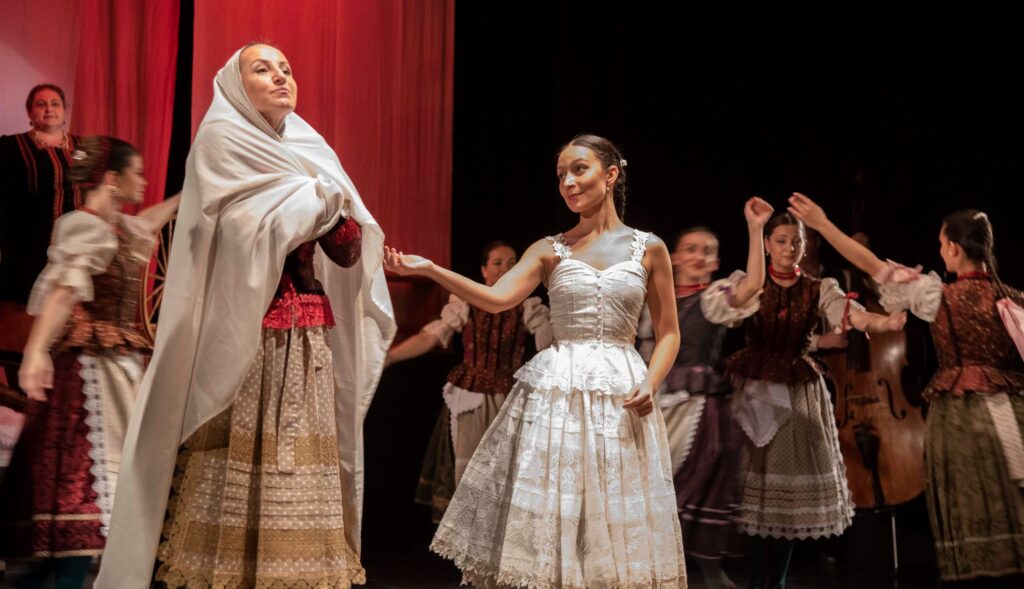
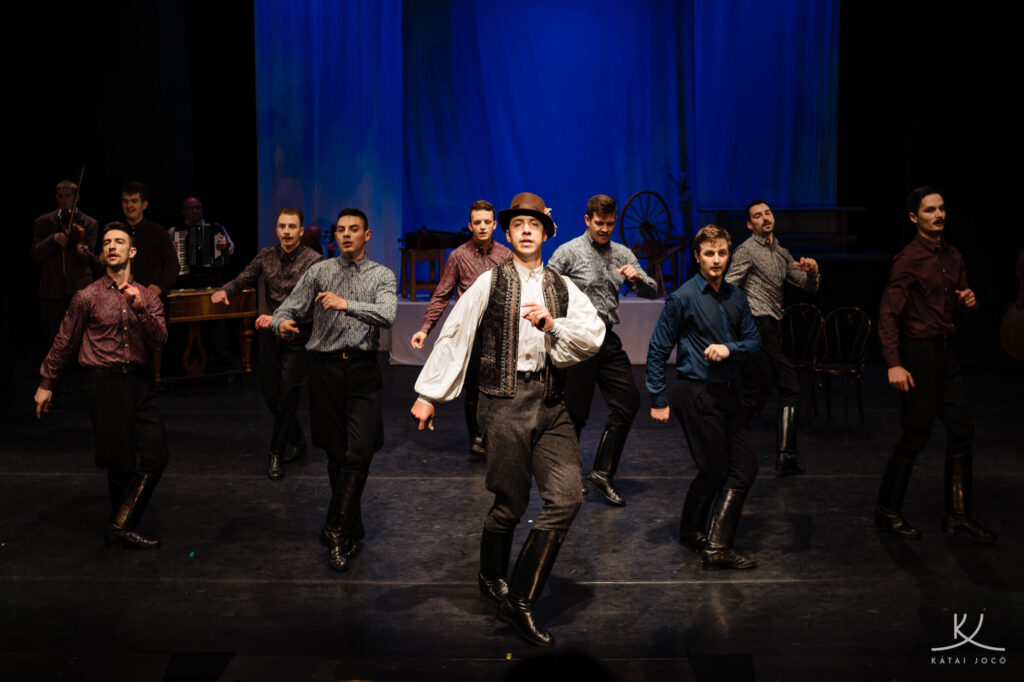
“In the case of a new performance that includes talking scenes, we also attend elocution and actor training sessions. During longer performance series or tours, we prepare our bodies with more intensive conditioning. On average, we usually have a six-hour day, but when a new performance is being prepared, we work eight to nine hours a day. Many people ask when we can rest, and if, in addition to the ensemble, we have time for other things, as our activity is equivalent to the performance an athlete. It is not always easy to harmonize the program of the ensemble to our private life, as we only know our schedule a week in advance,” Julcsi Ádám told TransylvaniaNOW, adding that sometimes they get a few days off, just to regenerate.
In addition to being a dancer in a professional ensemble, Julcsi Ádám also attends summer camps as a dance and gardon instructor. “I have also prepared several choreographies for youth dance groups with my partner. My last choreography was for the presentation of a horseback archery group, we combined folk dance with horseback archery; it was an interesting technical presentation. I also receive several invitations as a musical contributor to dance theater performances,” Julcsi Ádám said, listing her many activities.
The maintenance and operation of cultural institutions in Romania is not an easy task, nor a smooth one; many theaters suffer from limited financing and a lack of personnel. A theater is often shared by several companies, so it is difficult to hold rehearsals and schedule performances. In this light, we asked Julcsi Ádám if they suffer the consequences of the incompetence of Romanian cultural decision-making. “We are very lucky. Of the five professional ensembles, we have the largest technical staff, who are excellent at helping our work with their professional knowledge. We also have the possibility to work with foreign choreographers. Our wardrobe is the only thing that could be extended,” Julcsi Ádám said.
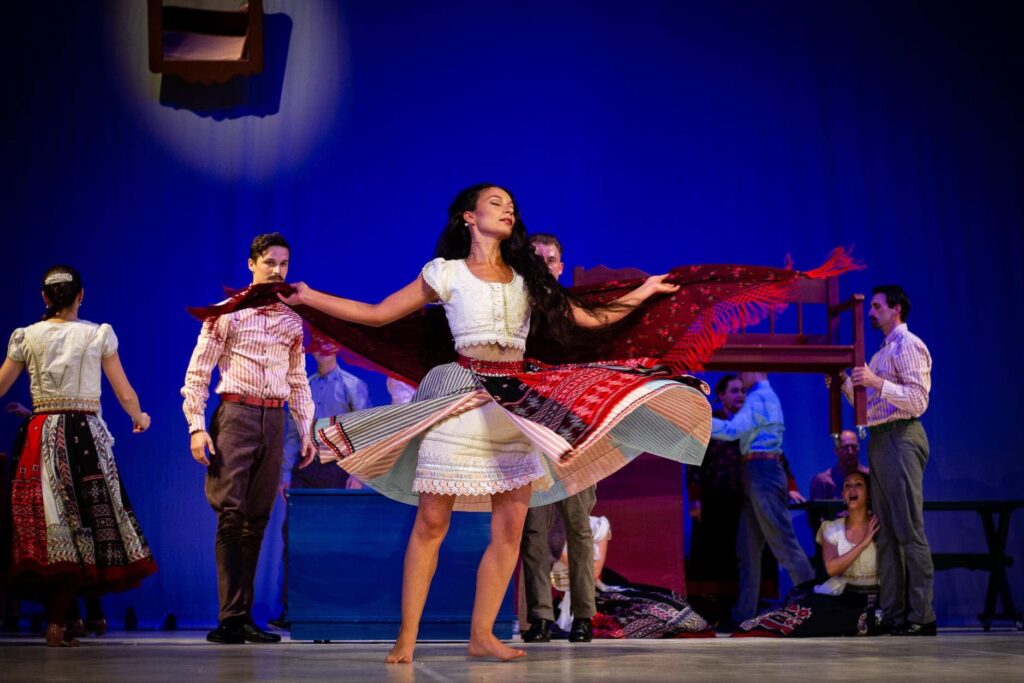
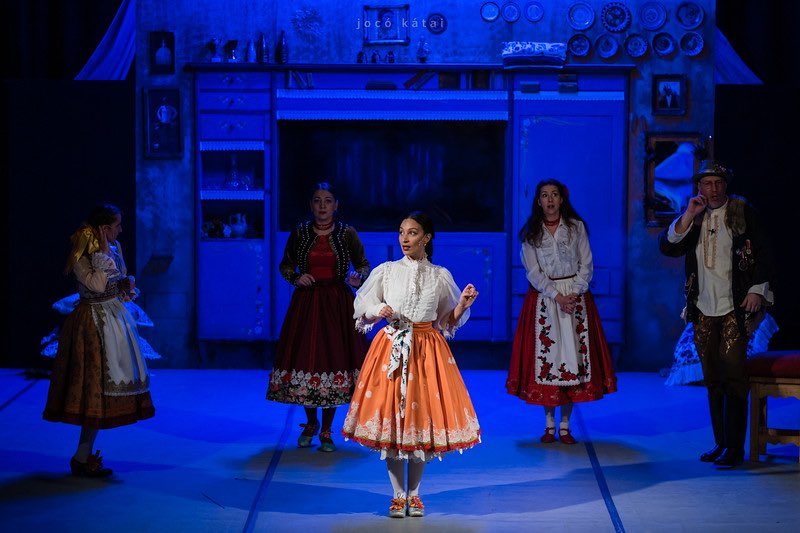
While Julcsi Ádám learned during her childhood in different dance groups and camps, and at the Háromszék Ensemble, she also enrolled in university training: She started at the Hungarian Dance Academy two years ago. The situation of academic folk art education in Transylvania was very insecure for years, despite the fact that dancers have been in great need of higher training, where professional dancers without a vocational qualification, as well as the new generations, can study and receive a diploma to prove their expertise. The problem was solved two years ago when the Hungarian Dance Academy from Budapest announced that they would offer a three-year academic program, organized in Marosvásárhely, for professional dancers without an academic certificate from Transylvania. Sapientia University also announced the introduction of folk dance art and a folk dance pedagogy program in Kolozsvár (Cluj-Napoca).
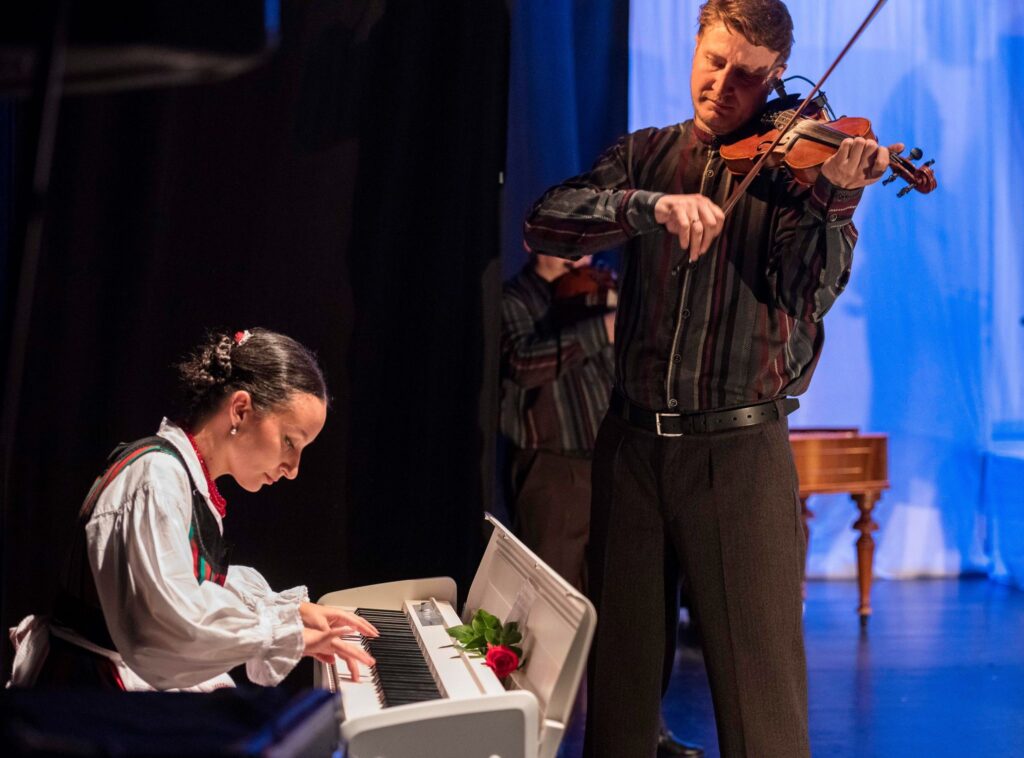
“There had been a folk dance program at the choreography department of the University of Arts Marosvásárhely; however, that ended. It was a great desire of ours to start a university training in Transylvania. It was a huge thing and effort of the Hungarian Dance Academy to start a VIP class for us, professional dancers from Transylvania,” Julcsi Ádám said. “I’ve been doing my best at my job so far, but now that I’ve completed two years of college, I am more open-minded and more conscious in my work. Academic training is very important for this job, because when graduates become instructors, it will matter how they shape the new generation, how we will lead them on this road. Unfortunately, Sapientia does not offer what the Hungarian Dance Academy does, but I believe that they can make up for their deficiencies in a short time,” she stated, stressing the importance of professional training.
In Transylvania, there is a strong folk dance movement; many people are interested in folk arts, and every little village has a dance group, while arts and crafts programs and summer camps are also very common. So we asked Julcsi Ádám how she sees the future of this movement. Can this progress expand any further, or will it slowly begin to stagnate or even decline?
“I believe that education will also help this process, as it will attract a wider audience. I see that many young people realize that our culture hides many treasures, so many seek, they feel responsible to preserve and transmit it, to cultivate a relationship with their roots. It is very promising for me. We have nothing to fear until we dance in Hungarian and sing in Hungarian,” Julcsi Ádám said.
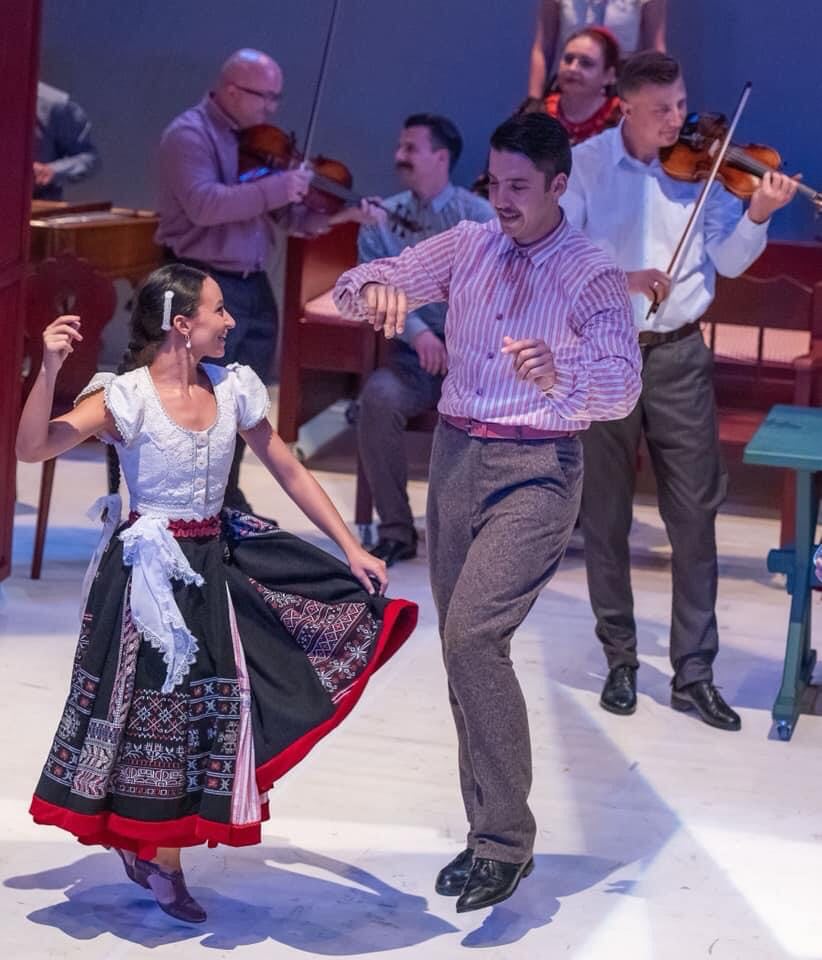
The professional dancer also spoke about her dreams and plans for the future. “In the first couple of years, the directors and choreographers envisioned me in some roles, and they only cast me as princesses, despite the fact that I always wished for more serious roles. But it is a joy for me that they are moving on from this image of me. Over the past two years, I’ve faced some very nice challenges, and I’ve put my heart and soul into it, but I think there are still a lot of sides of me that I’d like to show the audience. I also wish to put together a solo act in the near future, where I will create music and dance at the same time in front of the audience as a dancer-musician,” Julcsi Ádám, professional dancer of the Háromszék Folk-Dance Ensemble, told TransylvaniaNOW.
Title image: Scene from the performance of “Világhírű Reveder.” Photos: Háromszék Táncegyüttes